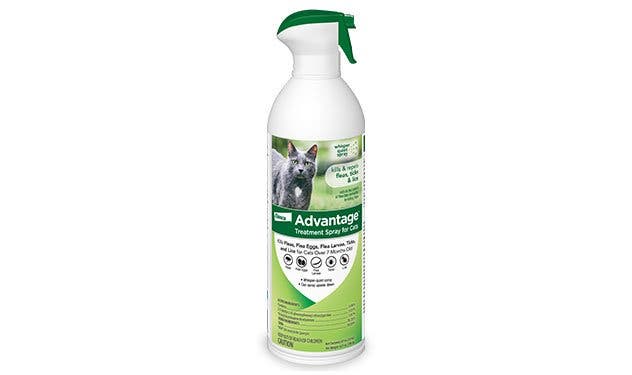Differentiate between fleas and lice on pets.
Fleas and lice are different pests, but share some similarities. Both fleas and lice:
- Are small, wingless insects that bite and chew the skin
- Are active at all times of the day
- Can transmit tapeworms
- Can cause hair loss, itching and potential bacterial infections
- Can make your pet extremely uncomfortable
How Are Fleas and Lice Different?
First things first:
- Fleas are more common and feed on blood.
- Lice are less common and typically feed on skin debris.
But if you're not sure about the difference between the two, there's a key fact that can help you quickly distinguish the pests: They move differently.
Fleas vs. Lice: Mobility
Fleas are harder to find because they move so well through the hair. You might see a flea and then not be able to find it again. Lice are not as mobile and may even be attached to individual hairs by way of their large mouthparts.
Fleas vs. Lice: Lifespan and Reproduction
Lifespan and reproduction are other important differences between fleas and lice. Lice usually live for about one month and females may lay numerous nits (eggs) in their lifetime. After laying nits, female lice glue them to the pet's hair shafts.
Fleas, on the other hand, live about two to three months on the pet and can lay thousands of eggs in their lifetime. Unlike lice, fleas lay eggs that fall right off the pet into carpets, bedding and backyard areas. From there, these eggs will hatch and develop into adults to re-infest the dog or infest other animals.
Fleas vs. Lice: Infestation
Lice spread to other pets through close contact, while fleas spread to pets from a contaminated environment. In other words, an infected pet can transfer lice directly to another pet, but a flea-infested pet will very rarely directly transfer fleas to another pet. Rather, a pet has to walk or lay around an area that is contaminated with fleas and then the fleas will jump on the pet.
Any pet, even those that are well-cared for, can get fleas; their age or breed doesn't matter, either. Lice, however, tend to affect young, old or neglected pets living in poor sanitary conditions.
Knowing basic facts can help you treat and prevent pest problems that affect your pet. Don't forget that prevention is key: Do all you can to keep fleas and lice at bay before they become a problem for you and your pet.

Seresto® Flea & Tick Collar for Dogs
An easy-to-use, odorless, non-greasy collar that kills and repels fleas and ticks for 8 continuous months.

Advantage® Treatment Spray for Cats
An on-pet treatment spray that kills and repels fleas, ticks and lice.

Advantage® Treatment Shampoo for Dogs & Puppies
A treatment shampoo that kills fleas and ticks on contact.

Advantage® Household Fogger
Reaches fleas and other listed insects hidden in places you can’t see, such as carpets, rugs, drapes, upholstery, pet bedding, floor cracks and open cabinets. The fogger kills adult and preadult fleas, including flea eggs, for 7 months. It also kills hatching fleas before they grow up to bite.

